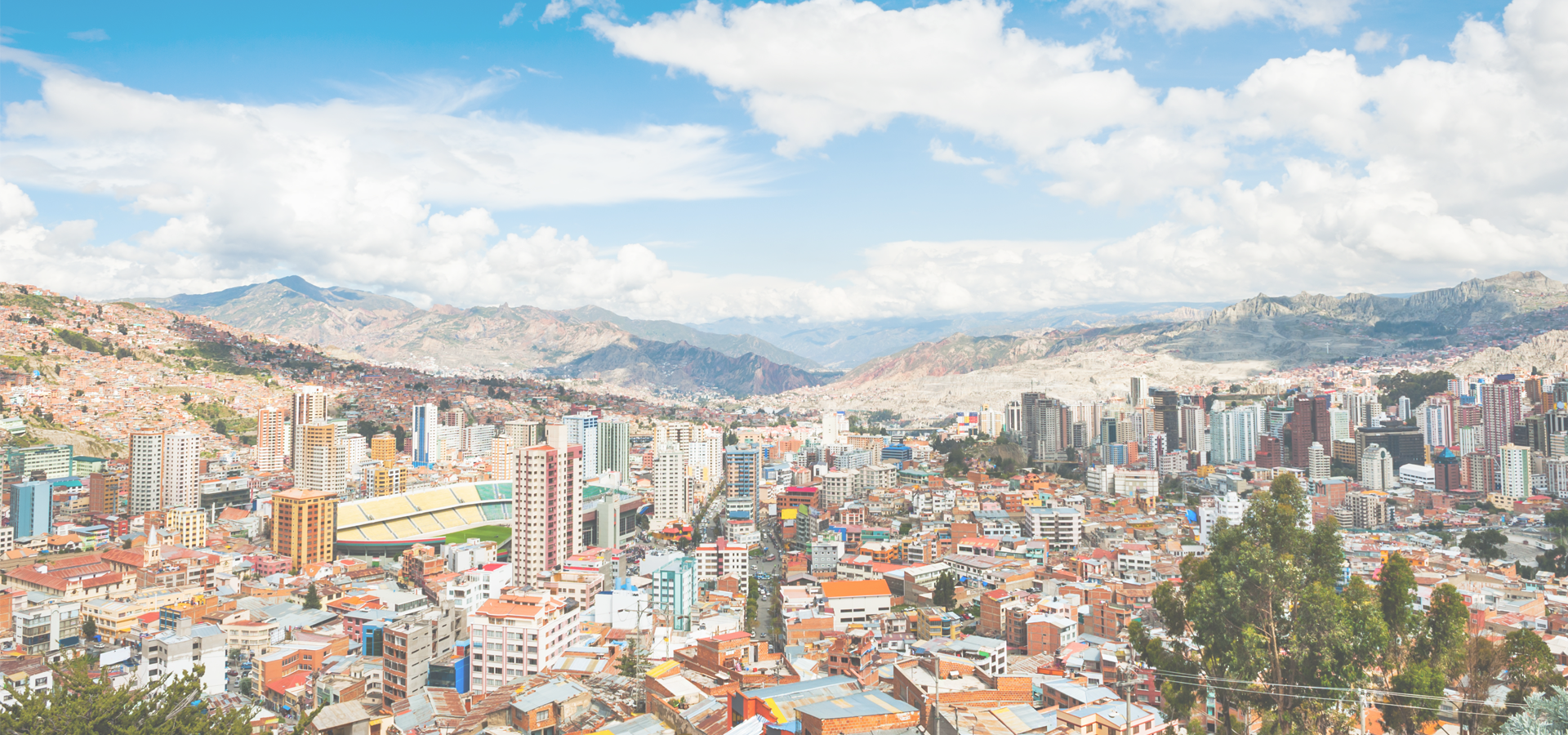El Alto, La Paz Department, Bolivia
🇧🇴 El Alto (Spanish for "The Heights") is the second-largest city in Bolivia, located adjacent to La Paz in Pedro Domingo Murillo Province on the Altiplano highlands. El Alto is today one of Bolivia's fastest-growing urban centers. It is also the highest major city in the world, with an average elevation of 4,000 m (13,123 ft).
The El Alto–La Paz metropolitan area, formed by La Paz, El Alto, Achocalla, Viacha, and Mecapaca, constitutes the most populous urban area of Bolivia, with a population of about 2.2 million. Much of the city's roads are unpaved and most citizens do not have access to running water, sewerage, electricity, or garbage collection for their homes.
History The dry and inclement plain above La Paz was uninhabited until 1903 when the newly built railways from Lake Titicaca and Arica reached the rim of the canyon, where the La Paz terminus, railyards and depots were built along with a settlement of railway workers (a spur line down into the canyon opened in 1905). In 1925, the airfield was built as a base for the new air force, which attracted additional settlement. In 1939, El Alto's first elementary school opened. El Alto started to grow tremendously in the 1950s when the settlement was connected to La Paz's water supply (before this, all water had to be transported from La Paz in tanker vehicles) and building land in the canyon became more and more scarce and expensive. In an administrative reform in March 1985, the district of El Alto and its surroundings were politically separated from the City of La Paz (this date is officially referred to and celebrated as the city's "founding day"). In 1987, El Alto was formally incorporated as a city. In 1994, the city became the seat of the Roman Catholic Diocese of El Alto.
Districts El Alto's autonomous government identifies 14 districts composing the city.
Demographics El Alto is the largest city in Latin America with a mostly Indigenous population. About 76% of its inhabitants are Aymara, 9% are Quechua, 15% are Mestizo (descendants of Indigenous and Europeans), and less than 0.1% are Criollos (White). El Alto was once known as La Paz's bedroom community, though recent growth of commerce and industry has led to concern about water pollution by businesses, including tanneries and slaughterhouses, for the city and communities downstream. Rapid population growth means the city struggles to bring potable water and sewer service to parts of the population, especially on the fringes of the expanding urban area.
Geography The city contains La Paz’s El Alto International Airport. El Alto is one of the highest major cities in the world, up to 4,150 meters (13,615 feet) above mean sea level. It has a cold climate, with the highest average monthly maximum temperature being 17 °C (63 °F) in November. It is one of the fastest-growing cities in Bolivia, due to immigration from Bolivia’s rural areas to the La Paz region which started with the rural reform of 1952 and increased in the last 10 years. Some migrants say the difficulty of growing crops in the countryside drove them to move to the city.
Attractions Museo de Arte Antonio Paredes Candia opened in 2002. From 2003, access from La Paz to the international airport, as well to oil and gas supplies, has been frequently blocked by protesting social leaders and some of the most powerful players in the politics of Bolivia. El Alto remains one of the major centres of the Bolivian gas conflict.
El Alto is known for its Neo-Andean architecture, built from the mid-2000s onward.
There is a large open-air market.
Government El Alto is a municipality within the province of Murillo. The government of the city is divided into the executive and legislative branches. The mayor of El Alto is the head of the city government, elected for a term of five years by general election. The legislative branch consists of the municipal council, which elects a president, vice president, and secretary from a group of 11 members.
Transport El Alto is connected to La Paz by three lines of the Mi Teleférico system. The city is connected to domestic and international destinations by El Alto International Airport.
La Paz, Bolivia

El Alto has a population of over 943,558 people. El Alto also forms part of the wider La Paz Department which has a population of over 2,300,000 people.
To set up a UBI Lab for El Alto see: https://www.ubilabnetwork.org Twitter: https://twitter.com/UBILabNetwork
🇧🇷 Rondonópolis -16.466
🇧🇷 Porto Seguro -16.451
🇧🇷 Cidade Ocidental -16.077
🇧🇷 Valparaíso de Goiás -16.067
🇧🇷 Senador Canedo -16.71
🇧🇷 Montes Claros -16.717
🇧🇷 Aparecida de Goiânia -16.822
🇧🇷 Pires do Rio -17.3
🇨🇦 Baie-Comeau -68.15
🇦🇷 Neuquén City -68.064
🇻🇪 Puerto Cabello -68.017
🇦🇷 Cipolletti -67.987
🇧🇷 Rio Branco -67.8
Locations Near: El Alto -68.1591,-16.5102
🇵🇪 Juliaca -70.133,-15.483 d: 239.9
🇧🇴 Sacaba -66.033,-17.4 d: 246.8
🇵🇪 Tacna -70.249,-18.015 d: 277.9
🇨🇱 Arica -70.317,-18.467 d: 315.7
🇧🇴 Sucre -65.263,-19.043 d: 416.3
🇨🇱 Iquique -70.15,-20.217 d: 462.6
🇵🇪 Cusco -71.967,-13.517 d: 527.2
🇧🇴 Santa Cruz de la Sierra -63.186,-17.784 d: 547.1
🇧🇴 Santa Cruz -63.183,-17.8 d: 547.7
Antipodal to: El Alto 111.841,16.51
🇨🇳 Sanya 109.512,18.253 d: 19701
🇨🇳 Qionghai 110.45,19.233 d: 19678.4
🇨🇳 Wenchang 110.755,19.617 d: 19651.1
🇻🇳 Quảng Ngãi 108.799,15.122 d: 19654.9
🇻🇳 Tam Kỳ 108.483,15.567 d: 19641.2
🇻🇳 Hoi An 108.336,15.875 d: 19634.2
🇻🇳 Quy Nhơn 109.247,13.77 d: 19602.4
🇻🇳 Qui Nhon 109.233,13.767 d: 19601.1
🇻🇳 Đà Nẵng 108.062,16.068 d: 19608.8
🇻🇳 Da Nang City 108.062,16.068 d: 19608.8